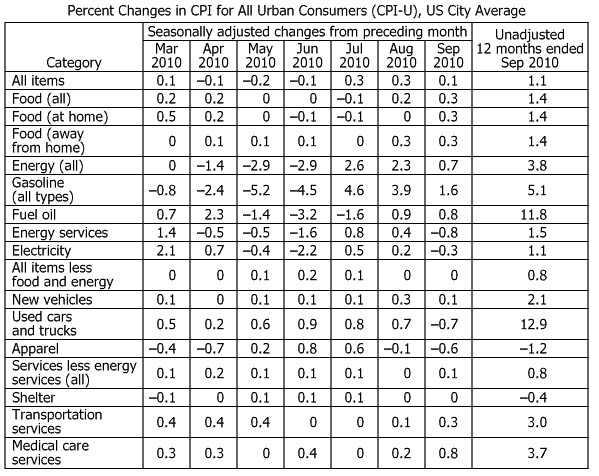题库 / GMATLA-TA-20
The Consumer Price Index (CPI) measures the average prices of goods and services purchased by consumers. In the United States, the CPI-U calculates the CPI for all urban consumers.
The CPI-U is calculated based on prices of food, clothing, shelter, fuels, transportation fares, charges for doctors and dentists' services, drugs, and other goods and services that people buy for day-to-day living. All taxes directly associated with the purchase and use of items (such as, in the United States, sales taxes) are included in the index. An increase in CPI-U by a certain fractional amount means an increase by that fractional amount in overall prices within the relevant category.
For analyzing general price trends in the economy, seasonally adjusted prices are usually preferred over unadjusted prices because adjusting eliminates the effect of changes that normally occur at the same time and in about the same magnitude every year—such as price movements resulting from climatic conditions, production cycles, model changeovers, and holidays.

For each of the following, select Yes if the statement is inferable from the given information. Otherwise select No.
Percent Changes in CPI for All Urban Consumers (CPI-U), US City Average
| Yes | No | |
|---|---|---|
|
|
|
The changes in seasonally adjusted prices for used cars and trucks between March 2010 and September 2010 were in most cases less in magnitude than the changes in seasonally adjusted prices of new vehicles for the same period.
|
|
|
|
The seasonally adjusted CPI-U for all items was higher in March 2010 than in the previous month.
|
|
|
|
The seasonally unadjusted change in the price of new vehicles in August 2010 over the previous month was about the same as the seasonally unadjusted change in the price of food away from home over the same period.
|
第三个选项 "The seasonally unadjusted change in the price of new vehicles in August 2010 over the previous month was about the same as the seasonally unadjusted change in the price of food away from home over the same period." 为什么不对
登录 或 注册 后可以参加讨论